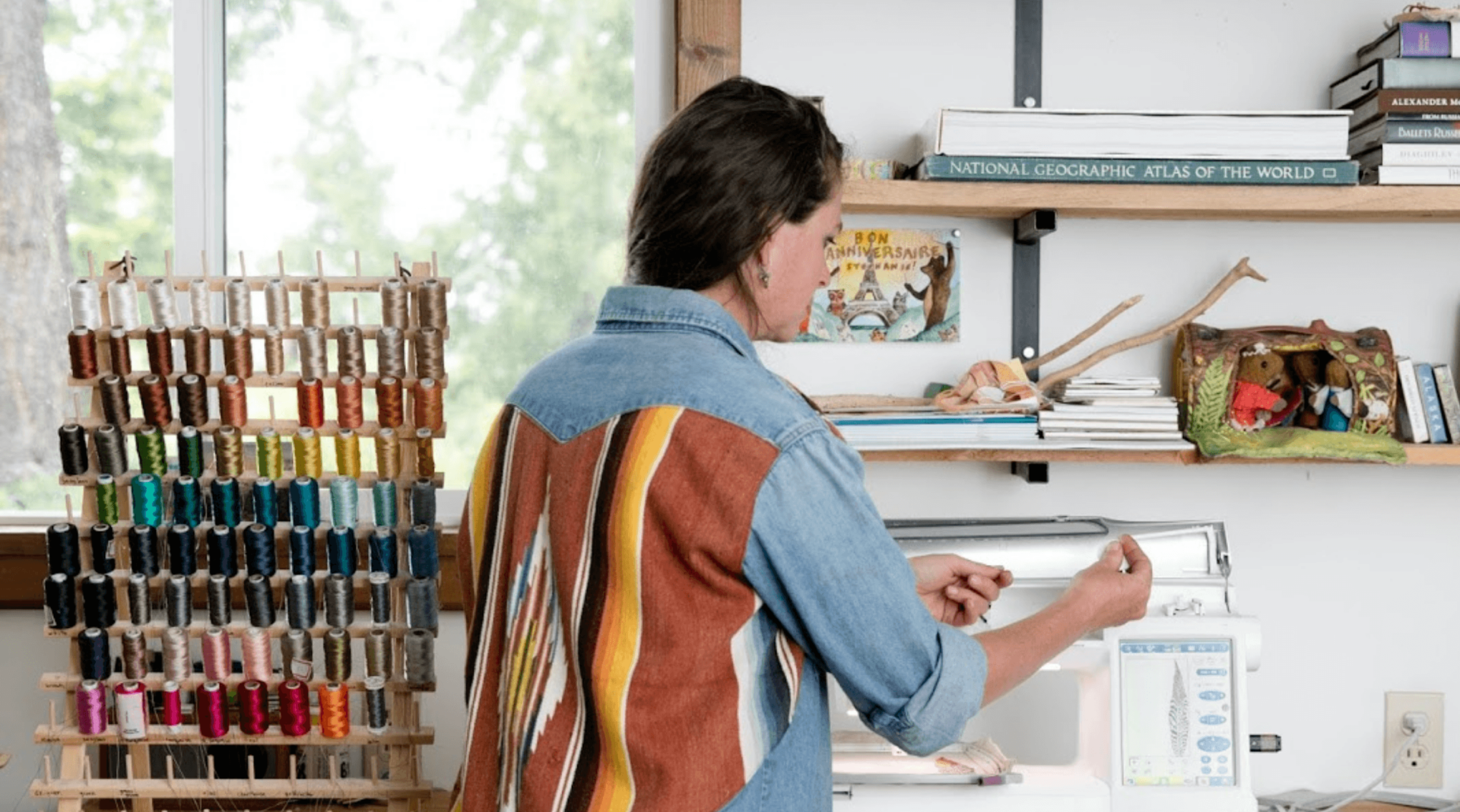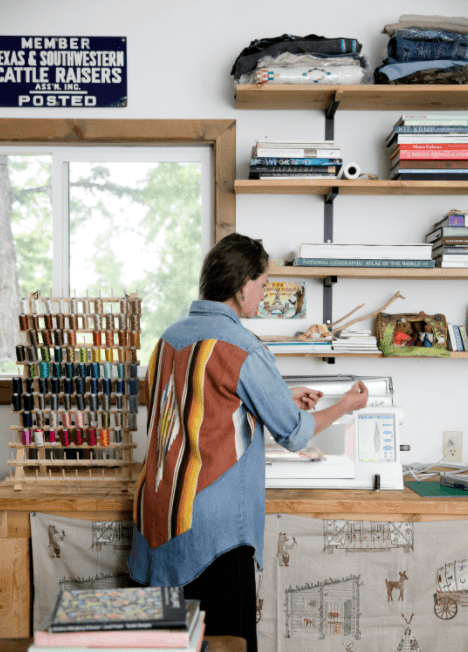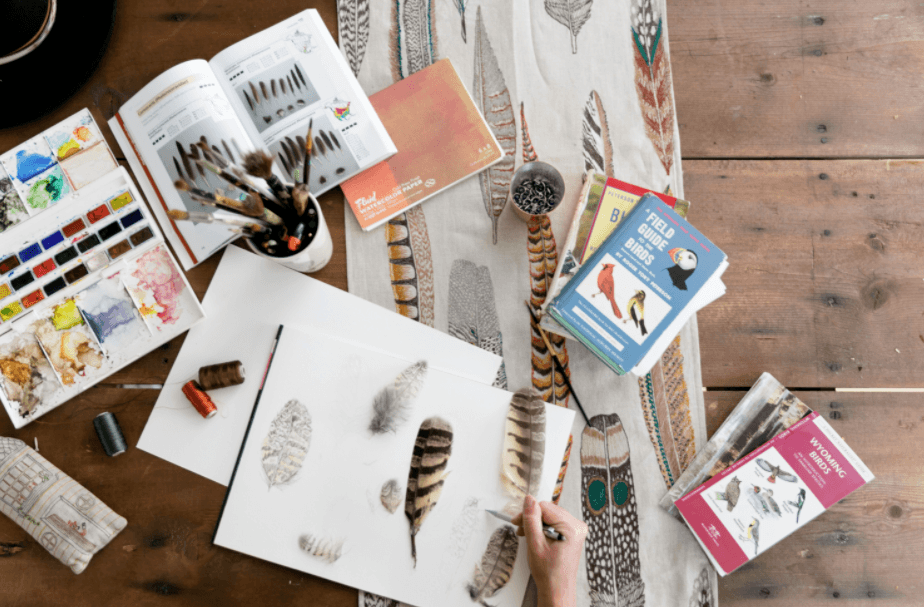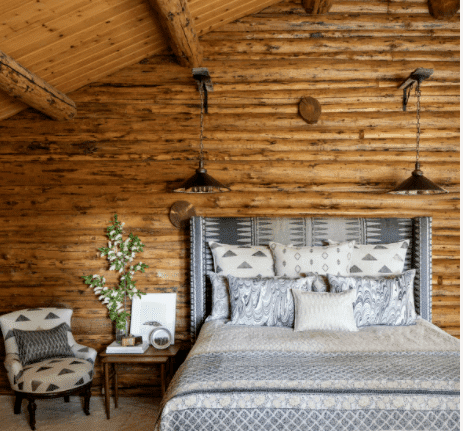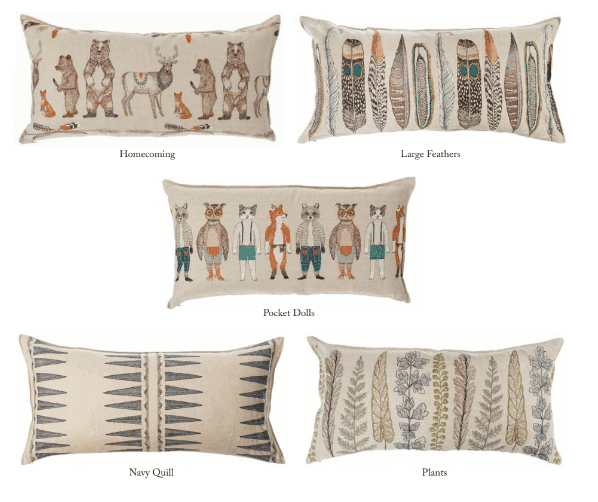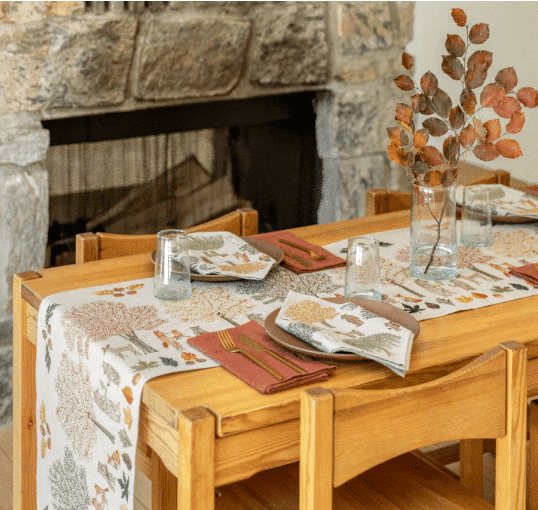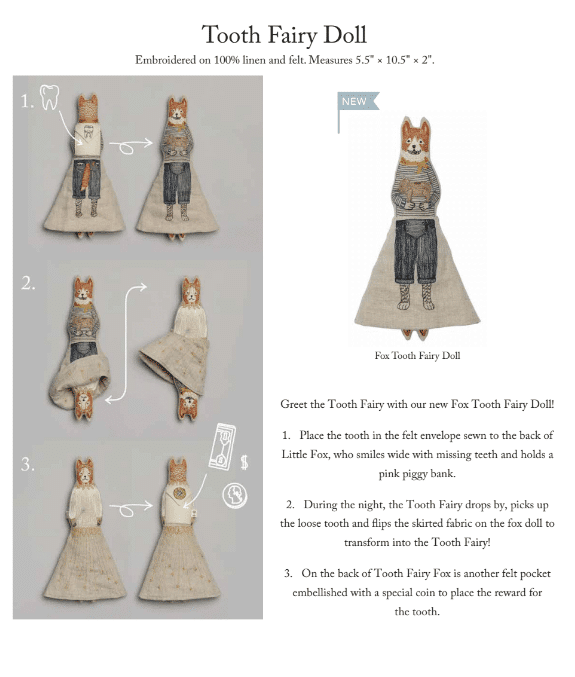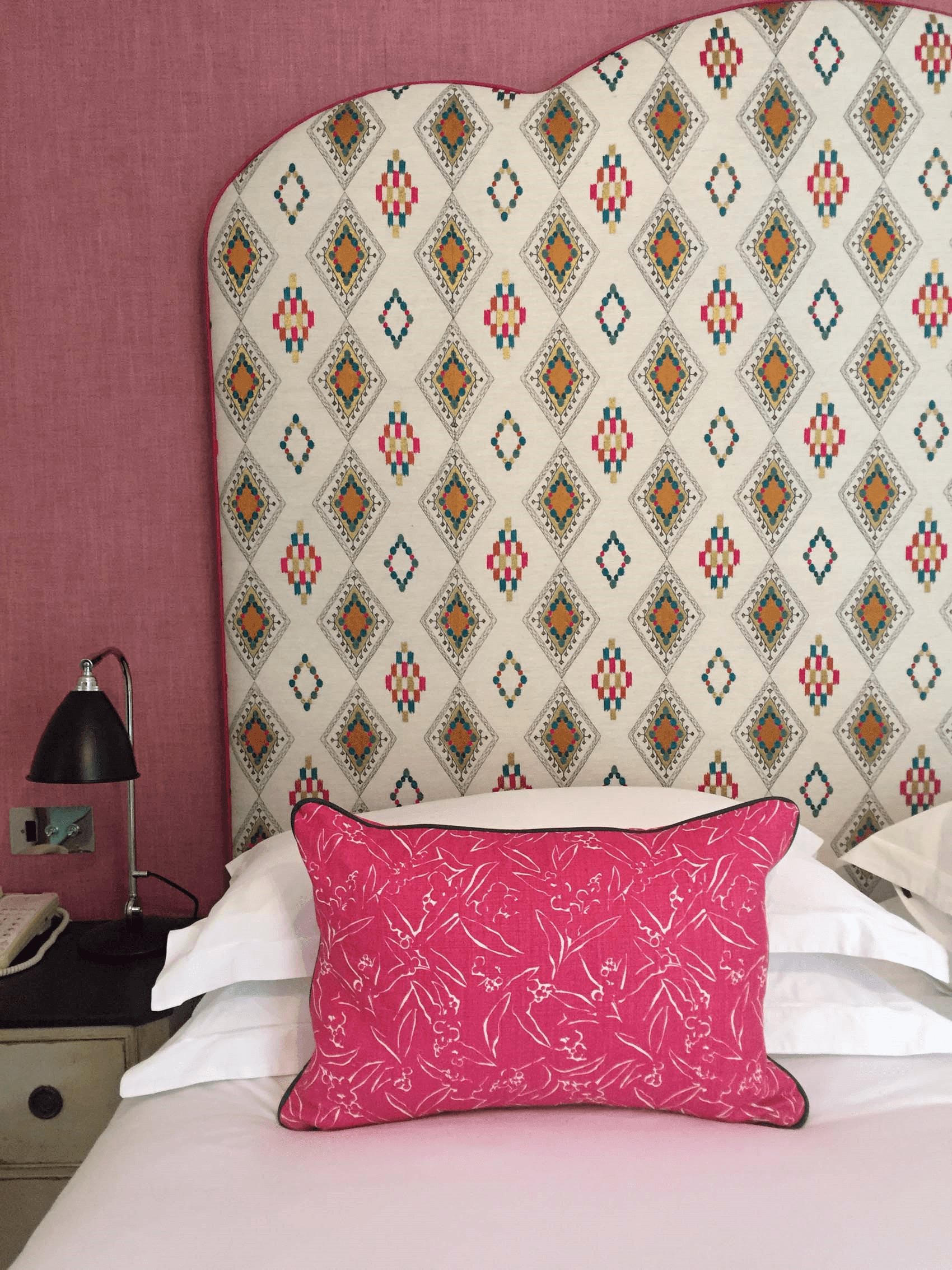It’s no secret that we love embroidery, linens and designs that tell a story and we’re always on the lookout for like-minded designers and makers. Let us introduce you to Stephanie Housley who started USA based company Coral and Tusk. We think her work is sublime and we have been lucky enough to have a chat with her.
Join us as we ‘Meet The Maker’…
How and when did you get into textile design and embroidery?
I have always loved fabric and working with cloth, whether that was making a rag doll with my grandma or learning rudimentary embroidery on an elementary schoolgirl’s sampler. Growing up, I was never without a bag of embroidery floss and a swatch of fabric with some sort of hand embroidery in progress all of the time. These were very informal drawings with thread and something just to pass the time.
I was lucky to not only to be admitted to Rhode Island School of Design, but with a scholarship that allowed me to attend. I am the first in my family to go to college, so naturally I wanted to study an applicable ‘art’ that had a professional trajectory. I was drawn to furniture design since it can be utilitarian as well as elaborate, decorative and creative. This was not yet an independent major however, and I struggled through the first semester of industrial design. My roommate was studying textiles and I was so envious of her projects. Prior to this, I didn’t even know what textiles meant and thought it meant ‘ceramic tiles’!
I switched majors and never looked back. Textiles was beyond perfect for me as a field of study and I loved learning about every aspect of the craft. Upon graduating in 1999, most jobs were in the woven interiors arena. I got a job working with woven fabrics for an interiors mill based in the US and worked there for 5 years, learning about the industry. I then began working at a chiefly silk vertical woven mill in India who also primarily sold to interior customers. I would go twice a year for a month and develop an entire collection. Then I would head back to the States to work with our clients who were American jobbers and editors such as Beacon Hill, Donghia and Larsen.
In 2007, whilst having insomnia in India, I was working on a very time consuming hand embroidered project. It dawned on me that there must be an embroidery machine out there that would allow me to make my drawings into embroidery, however I had not seen this type of mark-making on a wide production scale. I eventually found software that would allow me to hand draw every single stitch, essentially programming my hand embroidery, one stitch at a time, which completely harnessed the spirit. Making these embroideries was a hobby at first, even after purchasing the machine. I began to make some small batches of production with a colleague in India, and over the course of a few years, the hobby had grown into a fully fledged business. In 2012 I left my job as a textile designer to work on Coral & Tusk full time.
Kit Kemp is a firm believer that ‘every room tells a story’ and we love that about Coral & Tusk designs. Where do you get your inspiration from?
Thank you! We are inexplicably humbled that we are anywhere on Kit Kemp’s radar! What she brings to the field is so extraordinarily delightful, smart, alluring, refreshing and fulfilling.
Our inspiration comes from so many places ranging from literally asking ‘what do we want to portray in any given design’ to ‘does this design show an individual that we value their time spent looking at it’. These days there are endless options for any thing, at any price in the marketplace. We are honoured that we are able to get in front of people and that they choose to look at what we make, be excited by and welcome our products into their lives and homes. And so, we attempt to provide some level of discovery for them, whether it’s realising that it is a carefully made and embroidered item, or that there is a subtle design detail upon closer inspection, or there is a pocket on this. What is in the pocket?!
How do you begin to create a new design? Does it evolve or do you have a process?
We make two collections a year: Spring/Summer and Fall/Winter. I start to think of what I am excited to dive into collection wise, maybe even a year before I begin the drawings. Almost all of the ideas I have happen while in motion, whether it’s running, walking, hiking, or biking. I will think of something that really excites me as a rough concept, usually based on something I have seen in nature, a cherished childhood memory, or something recently learned. Once I have the loose concept, the designs just pop into my mind. I then sketch out basic and very fast sketches that don’t look like anything at all. They help me to identify what I think is worth pursuing design wise, and furthermore, what type of product they will become. I used to just think of designs without marrying them to products, which was not a great approach for making a cohesive collection. Being an ‘editor’ is something I still struggle with since I have such a manufacturing mindset. Being decisive about both design and product has been a game changer.
Once I have all the statement designs of the collection dialled in and have spent time making more refined drawings, I present the Coral & Tusk team with a design brief which includes the inspiration behind the collection, drawings, a spreadsheet of products and colour palette. They give me feedback or help me make final decisions in case I am questioning which direction best gets at the idea I am after. We also refer back to sales figures to remind ourselves where we have seen successes and failures which can be extremely informative. As soon as all concepts are finalised, I embark on an embroidery files phase and anxiously await prototypes!
What does your everyday look like?
I have a pretty consistent schedule but there are major changes to it depending on the season. Where we live in rural Wyoming, we have exceptionally beautiful but short summers and long, snowy, cold winters (but still beautiful!). I spend as much time outside as humanly possible, locating my office outdoors on any day that allows.
Get out of bed at 7 am latest (earlier in the summer).
Sit quietly and have coffee and hang with the dog (I try to not have my phone nearby during these few morning minutes).
Check in with emails and do anything time sensitive.
Do 30 minutes of power yoga, then 15 minutes of core using the Peloton app. I add in a Barre workout to this at least once a week.
Visit my 4 chickens, taking them compost to munch on, give them grubs, let them run around.
Spend the bulk of the day working: Mondays and Tuesdays are individual and team meeting days. Wednesdays, Thursdays and Fridays are ‘tend to other stuff’ days, like running the business, designing, research and doing analysis.
After the main part of the work day is done, I go running for anywhere from 5 – 12 miles depending on the day and if I am training for anything.
Then a shower, quick dinner, and I either continue to work or spend time with friends and neighbours in the summer or take a sauna in the winter. I used to not sleep much but these days I try to be in bed at midnight.
Weekends are at least one LONG hike day in the summer, and it’s usually snow maintenance in the winter.
Do you have any advice for a person starting a business in the creative world?
I think you have to really, really love what you make and you have to believe in it. I also think you have to approach starting a business like a business. Having a plan is essential: What you are making. How you are making it. Where you are making it. How scalable is your production? Who is your audience and what are your sales channels? Knowing these things are imperative to getting the pricing in place first and foremost and knowing what will be required to get off the ground. Scenario planning is also wise to do right out of the starting blocks.
I think that as a stereotype, most women makers and business owners tend to not charge enough or are too shy to ask for what they need for what they do. So, if you are one of those women, don’t do that! Know and represent your value and worth confidently.
Be willing and able to hire experts when and where you need to. It is impossible to do every aspect of a business on one’s own, and having a strong team is key to success. It is also really fulfilling on a personal level to love the people you work with. I am honoured my team chooses to spend their time, energy and talent as contributors to what we do. They are all really amazing and my life is richer with all of them in it. So, get a good team is the other piece of advice!
Do you have a favourite piece of work you have created over the years?
I love our pocket dolls and pocket pillows. I loved pockets as a kid and asked my Mum to sew them into every piece of clothing I wore! I still love them and I guess it’s that excitement of discovery of what you will find in them. But I really like everything we make. It feels like such a privilege to do what we do!
If you would like to check out some of Coral & Tusk’s designs, check-in at The Soho Hotel’s room 212 and sleep under this embroidered headboard of dreams. Visit the Coral & Tuck website here.

